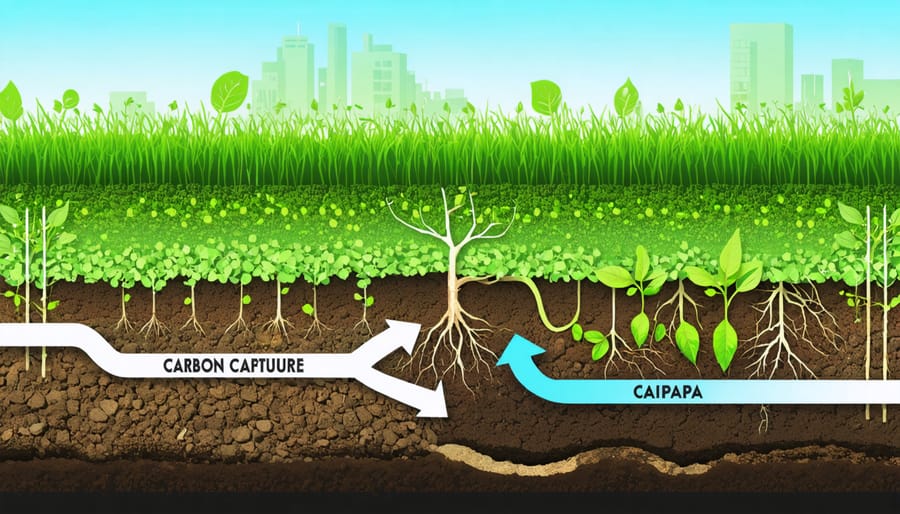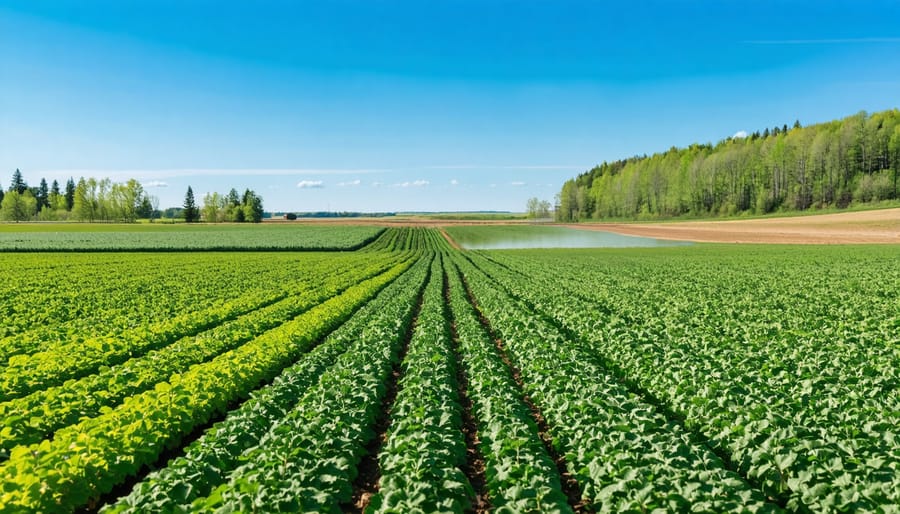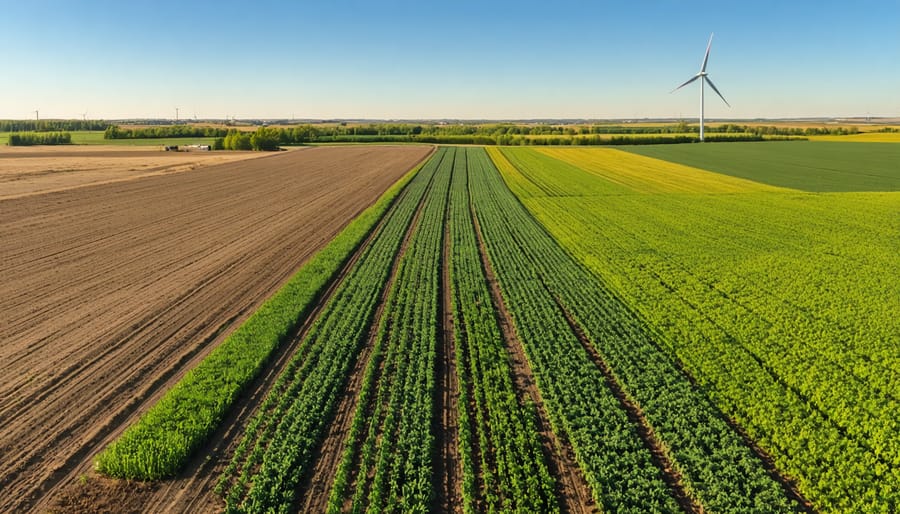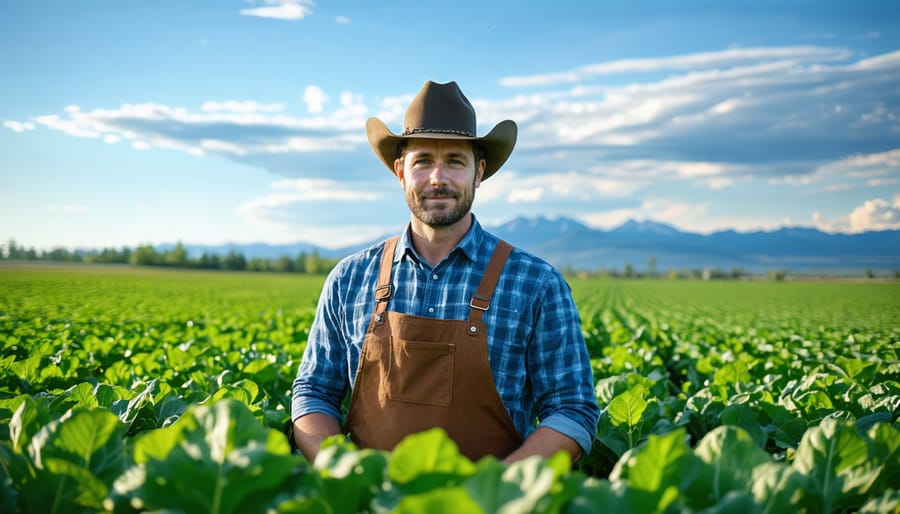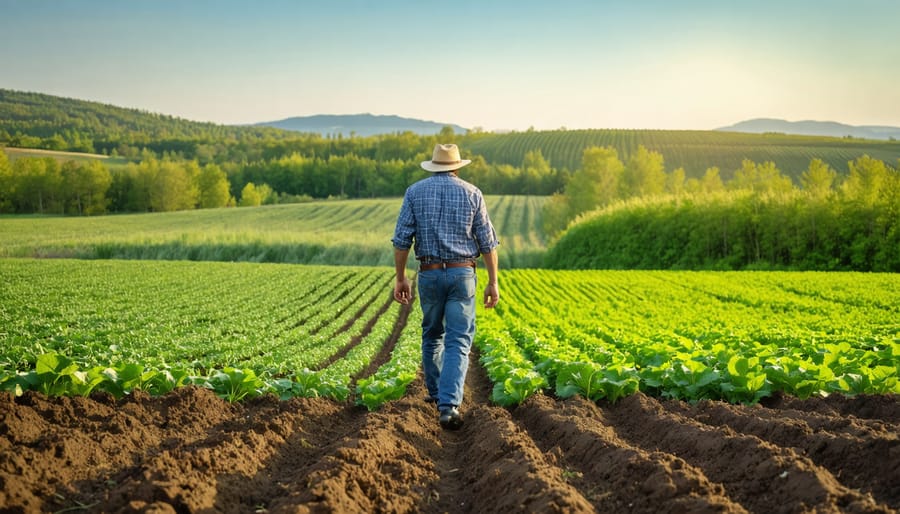The transition to a low-carbon economy represents a transformative opportunity for Canadian agriculture, with Alberta farmers positioned at the forefront of this historic shift. Carbon markets now value soil carbon sequestration at $20-45 per tonne, creating tangible revenue streams for producers who adopt sustainable practices. Through proven methods like zero-till farming, cover cropping, and precision nutrient management, Alberta’s agricultural sector has already banked over 2 million tonnes of carbon credits since 2007. This shift isn’t just about environmental stewardship – it’s about strengthening farm resilience and profitability in a changing global marketplace.
As carbon pricing mechanisms mature and international demand for low-carbon agricultural products grows, early adopters stand to gain significant competitive advantages. Leading producers across the province are demonstrating that sustainable practices not only reduce emissions but also improve soil health, water retention, and crop yields. With Alberta’s robust carbon offset system and established verification protocols, farmers have clear pathways to monetize their environmental contributions while building more resilient operations for future generations.
This practical guide explores how Alberta producers can navigate the transition to low-carbon agriculture, capitalize on emerging market opportunities, and maintain strong bottom lines while contributing to Canada’s climate goals.
The Economic Promise of Soil Carbon Markets
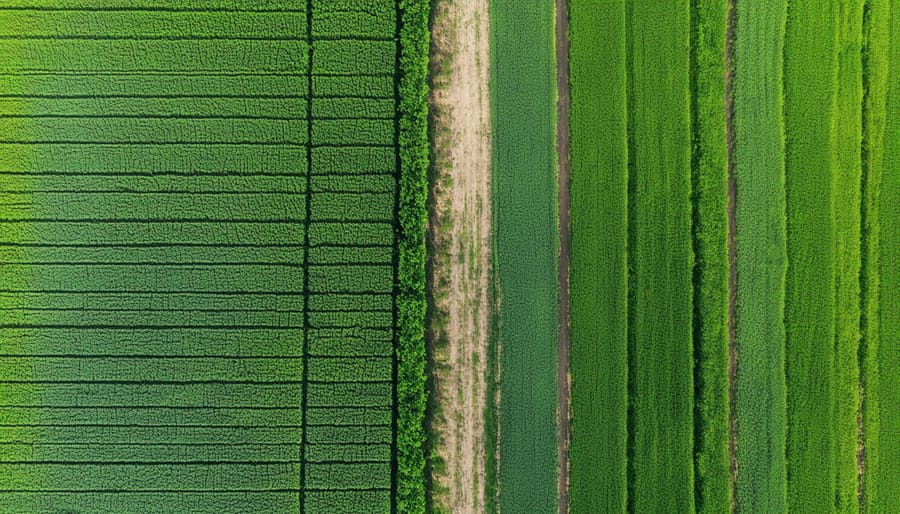
Current Market Values and Projections
The market for soil carbon credits in Alberta continues to show promising growth, with current prices ranging from $30 to $45 per tonne of sequestered carbon. Industry analysts project these values could increase to $65-$85 per tonne by 2025, driven by growing corporate demand for verified carbon offsets. For Alberta farmers, this represents a potential additional revenue stream of $15-$35 per acre annually, depending on soil management practices and verification methods.
Recent market data shows particularly strong demand from energy and manufacturing sectors, with major Alberta-based companies committing to significant carbon offset purchases over the next five years. The provincial carbon market has demonstrated a steady 15% annual growth rate since 2019, with transaction volumes expected to double by 2024.
Local carbon aggregators report increasing interest from family farms, with participation rates rising 30% year-over-year. This growth suggests a maturing market that’s becoming more accessible to farmers of all sizes, with improved verification processes and more competitive pricing structures.
Alberta’s Carbon Market Advantages
Alberta stands at the forefront of Canada’s carbon market development, offering farmers unique advantages in the transition to a low-carbon economy. Our province’s established carbon offset system, operating since 2007, provides a solid foundation for agricultural carbon credit trading. Local farmers benefit from well-developed verification processes and a network of experienced aggregators who understand our specific agricultural context.
The Alberta Carbon Trunk Line and existing CO2 infrastructure create efficient pathways for carbon management, while our robust agricultural research institutions offer valuable support for implementing carbon sequestration practices. Many Alberta farmers already practice conservation agriculture, making the transition to carbon credit generation a natural next step.
Our province’s carbon pricing framework creates consistent local demand for offsets, ensuring a stable market for agricultural carbon credits. Additionally, Alberta’s agricultural sector benefits from established relationships with major industrial buyers who need to meet their emissions reduction obligations. This combination of infrastructure, expertise, and market demand positions Alberta farmers advantageously in the emerging carbon economy, creating opportunities for diversified farm income while contributing to climate solutions.
Making the Transition: Practical Steps for Farmers
Assessment and Planning
Before making the shift to low-carbon practices, it’s essential to understand your farm’s current carbon footprint. Here in Alberta, we have several user-friendly tools and methods to help you assess your starting point.
The Agricultural Carbon Assessment Tool (ACAT), developed specifically for Canadian farmers, offers a straightforward way to measure your operation’s emissions. By inputting basic information about your farm size, crop types, and current practices, you’ll receive a detailed breakdown of your carbon output across different activities.
Record-keeping is crucial for accurate assessment. Start by documenting your fuel usage, fertilizer applications, and energy consumption. Many Alberta farmers find success using simple spreadsheet templates or farm management apps to track these metrics.
Consider working with local agricultural extension services or carbon consultants who understand our unique prairie conditions. They can help conduct detailed soil tests and emissions assessments, providing valuable insights into your farm’s carbon profile.
Remember to account for existing carbon-positive practices you may already be using, such as reduced tillage or cover cropping. These baseline measurements will help you identify areas for improvement and track your progress as you transition to low-carbon practices.
The Alberta Carbon Offset Registry provides guidelines for measurement protocols that align with provincial standards, ensuring your assessment meets market requirements for future carbon credit opportunities.
Implementation Strategies
Transitioning to a low-carbon operation starts with assessing your current farming practices and identifying opportunities for improvement. Begin by conducting a baseline soil carbon test to understand your starting point. This data will prove invaluable when measuring progress and potentially participating in carbon markets.
Next, implement no-till farming practices where suitable, which can significantly reduce soil disturbance and preserve carbon stocks. Consider introducing cover crops during shoulder seasons, selecting species that match your soil type and climate conditions.
Develop a crop rotation plan that includes deep-rooted perennials and nitrogen-fixing legumes. These plants help build soil organic matter while improving overall soil structure. For livestock operators, implement rotational grazing systems that allow proper rest periods for pastures to regenerate.
Start small with a test plot of 10-20 hectares to experiment with new practices before scaling up. Document all changes and maintain detailed records of inputs, yields, and soil test results. Connect with local agricultural extension services and join farmer-led learning groups to share experiences and learn from others who have successfully made the transition.
Remember to regularly monitor soil moisture levels and adjust practices based on seasonal conditions. Consider investing in precision agriculture tools to optimize resource use and reduce emissions from equipment operations.

Measuring and Verifying Results
Accurate measurement and verification of carbon sequestration are crucial steps in participating in Alberta’s carbon markets. Modern soil testing protocols combine traditional sampling methods with advanced technology to provide reliable data. Farmers typically start with baseline measurements, followed by annual or bi-annual testing to track progress in their carbon sequestration methods.
The most common verification approaches include:
– Regular soil sampling at consistent depths (0-30 cm)
– GPS-marked sampling points for accurate year-over-year comparison
– Laboratory analysis by accredited facilities
– Documentation of management practices
– Third-party verification when required by carbon programs
Many Alberta farmers are now using digital tools and apps to track their carbon measurements, making record-keeping more manageable. These platforms often integrate with farm management software, allowing for comprehensive data collection that includes input usage, yield data, and soil test results.
For carbon credit verification, maintaining detailed records is essential. This includes:
– Field operations and timing
– Input applications and rates
– Cover crop species and planting dates
– Grazing records (if applicable)
– Photographic evidence
– Weather data
Local agronomists and carbon program representatives can help ensure your measurement and verification processes meet program requirements while keeping the administrative burden manageable.
Real Success Stories: Alberta Farmers Leading the Way
Case Study: Mixed Farming Success
The Johnson family farm, located just outside of Olds, Alberta, exemplifies how mixed farming operations can successfully transition to low-carbon practices while maintaining profitability. Over the past five years, Sarah and Mark Johnson have transformed their 2,000-hectare operation into a model of sustainable agriculture.
The Johnsons implemented a diverse crop rotation system, incorporating pulses and cover crops alongside their traditional wheat and canola. This approach has reduced their nitrogen fertilizer use by 30% while improving soil health. They also introduced a managed grazing system for their 200-head cattle herd, moving them frequently between paddocks to optimize grass recovery and carbon sequestration.
“The key was making gradual changes and carefully monitoring our results,” explains Sarah Johnson. “We started with soil testing and carbon baseline measurements, then adjusted our practices based on the data.”
Their efforts have paid off. The farm has documented a 25% reduction in greenhouse gas emissions while increasing crop yields by 15%. They’ve also qualified for carbon offset credits through Alberta’s agricultural carbon program, generating an additional revenue stream of $45 per hectare annually.
The Johnsons regularly host field days to share their experiences with neighboring farmers. “It’s about finding the right balance,” Mark notes. “We’re proving that environmental stewardship and profitable farming can go hand in hand.”
Case Study: Large-Scale Grain Operation
Meet Tom Anderson, a third-generation farmer managing 4,000 hectares of cropland near Lethbridge, Alberta. In 2020, Tom recognized the potential of carbon markets and began implementing practices to reduce his operation’s carbon footprint while creating additional revenue streams.
Tom’s transition started with adopting no-till practices across 75% of his land and introducing cover crops into his rotation. He partnered with a local carbon program aggregator who helped him establish baseline soil carbon measurements and develop a monitoring plan.
“The initial investment in equipment and time was significant,” Tom explains, “but the long-term benefits have been worth it.” Over three years, his operation has sequestered an estimated 2,500 tonnes of carbon dioxide equivalent, generating carbon credits worth approximately $75,000.
Beyond carbon credit revenue, Tom has observed additional benefits: reduced fuel costs from fewer field operations, improved soil moisture retention, and increased yield stability during dry periods. His soil organic matter has increased by 0.5% across monitored fields.
“The key to success was starting small and scaling up gradually,” Tom advises. “We began with a 500-hectare pilot project to learn the ropes before expanding.” Today, Tom’s operation serves as a demonstration site for other farmers interested in carbon market participation, showing how large-scale grain operations can successfully balance productivity with environmental stewardship.
Overcoming Common Challenges
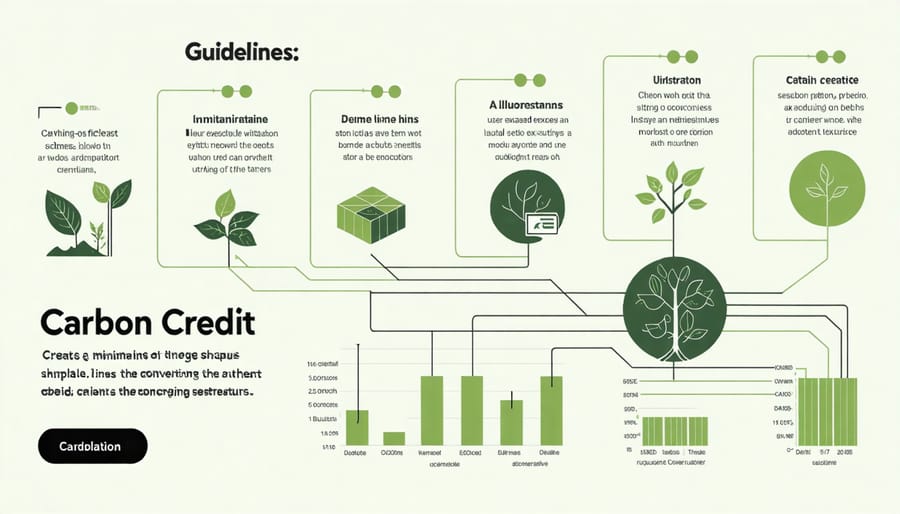
Financial Considerations
Transitioning to a low-carbon operation requires careful financial planning, but various funding options can help offset the initial costs of soil carbon storage. Alberta farmers can access provincial grants through the Environmental Stewardship and Climate Change Producer Program, which offers up to $50,000 for qualifying projects. The Canadian Agricultural Partnership also provides cost-sharing opportunities for sustainable practices.
Local agricultural credit unions often offer specialized loans with favorable terms for environmental improvements. Additionally, carbon offset markets present opportunities to generate income while transitioning, with current prices ranging from $20 to $50 per tonne of carbon sequestered.
Consider starting with smaller, high-impact changes that offer quick returns, such as precision agriculture tools or cover cropping. Many farmers find success by implementing changes gradually over 3-5 years, allowing them to manage cash flow while building their low-carbon practices. Working with local agricultural financial advisors can help develop a customized transition plan that aligns with your farm’s budget and goals.
Technical Support Resources
Several support resources are available to help Alberta farmers navigate the transition to a low carbon economy. The Agricultural Research and Extension Council of Alberta (ARECA) offers free consultations and workshops focused on sustainable farming practices and carbon market participation. Local agricultural fieldmen can provide one-on-one guidance tailored to your specific operation.
The Alberta Climate Information Service (ACIS) maintains an extensive database of climate and soil data, helping farmers make informed decisions about carbon sequestration practices. The Canadian Agricultural Partnership (CAP) program provides funding for environmental sustainability initiatives, including soil testing and equipment upgrades.
For ongoing learning, the Farm Carbon Toolkit offers online courses and webinars specifically designed for Canadian producers. The Alberta Federation of Agriculture hosts regular peer-learning sessions where experienced farmers share their success stories and lessons learned in carbon farming.
Technical assistance is also available through certified crop advisors and soil health specialists who can help develop customized carbon management plans. Many agricultural supply companies now offer specialized training on carbon-efficient equipment and practices, often at reduced or no cost to farmers.
As we’ve explored throughout this guide, transitioning to a low-carbon economy presents both opportunities and challenges for Alberta’s farming community. The path forward is clear: by implementing sustainable practices like reduced tillage, cover cropping, and improved grazing management, farmers can contribute to climate solutions while potentially accessing new revenue streams through carbon markets.
Remember that you’re not alone in this journey. Alberta’s agricultural community is known for its innovation and resilience, and numerous resources are available to support your transition. Start by conducting a baseline assessment of your current operations and identifying areas where carbon-reducing practices could be implemented. Consider connecting with local agricultural extension services or joining farmer-led discussion groups to share experiences and learn from others who have already begun their low-carbon journey.
Take advantage of available programs and incentives, but move at a pace that makes sense for your operation. Small, strategic changes can lead to significant long-term benefits. Whether you’re ready to dive into carbon credit markets or simply want to improve your soil health, each step towards sustainable practices strengthens both your farm’s resilience and its future profitability.
For your next steps, consider reaching out to carbon market aggregators, attending workshops on sustainable farming practices, or consulting with agricultural advisors who can help develop a customized transition plan for your farm. Your efforts today will help shape a more sustainable and prosperous future for Alberta’s agricultural sector.


